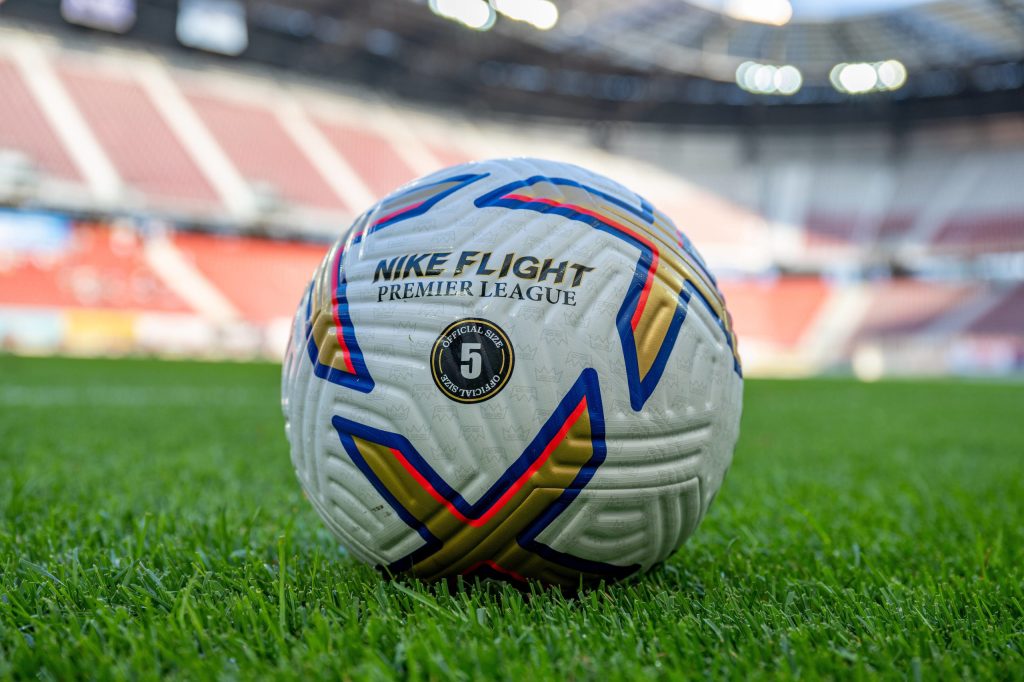Both teams in this Sunday night cash came into this game off the back of defeats the Thursday before. Romania lost by one goal away to Iceland, while Norway lost in the play-off semi-final qualifier for the European Championship at home to Serbia after extra time. The Norwegians haven’t qualified for a European Championship or FIFA World Cup since 2000. However, expectations are growing with a new generation of talents emerging featuring the likes of Erling Braut Håland of Borussia Dortmund and Martin Ødegaard of Real Madrid.
Romania has a modern footballing history with more success than Norway. They qualified for the EC in both 2008 and 2016 but have had the same misfortune with the World Cup as Norway. Neither one of them have qualified for a WC since 1998. Romania had their golden age in the ’90s, delivering good performances in international tournaments. In 1994 when they reached the quarter-finals of the World Cup in the USA for example, with playmaker Gheorghe Hagi leading the team.
This tactical analysis will look at how Romania approached the match in the opening minutes, and how Norway’s tactics let the exciting talents exert their mark on the game. In the analysis, the effect of the Norwegians’ fullbacks in attack will be explored alongside Romania’s numbers in the centre and the advantages of the 4-4-2 in defence.
Lineups
Lars Lagerbäck has remained loyal to his 4-4-2 in most matches as head coach of the Norwegian team. Behind the backline, Rune Almenning Jarstein continued as the number one between the sticks. This is despite him being pushed to the bench at Hertha Berlin this season.
Several changes were made from the team that played on Thursday. Birger Meling, enjoying a good start to his career at Ligue 1 club Nîmes Olympique, replaced Haitam Alesaami at left-back. He was joined in defence by Kristoffer Vassbakk Ajer and Stefan Strandberg, replacing Tore Reginiussen. Captain Omar Elabdellaoui continued at right-back.
On the left-hand side of midfield, Mohamed Elyounoussi replaced Stefan Johansen and Mathias Normann replaced Markus Henriksen at left centre midfield. The midfield four were completed with the usual Sander Berge at right centre midfield and Ødegaard on the right. Up top for the Norwegians, the Bundesliga-duo of Alexander Sørloth and Håland started as the last time.
Romania coach Mirel Rădoi lined up his side in the usual 4-3-3. Even though the formation is usual, yet again, the personnel were not. Rădoi has changed the lineup several times this autumn, and goalie Ciprian Tătăruşanu is the only one which has started all four matches in the same position.
Cristian Manea started at right-back this time out, joined by Nicușor Bancu at the left-back. Centre-back positions were taken by Andrei Burcă on the right and Alin Toșca on the left. In midfield, Răzvan Marin, Alexandru Crețu and Alexandru Cicâldău started tonight’s match behind the front trio. From right to left, the starters up top were Gabriel Iancu, George Pușcaș and Ianis Hagi.
Romania in the first 10 minutes
From a neutral perspective, the Romanians had a better start to the match than Lagerbäck’s men. This was despite the match ending in a clear defeat for them. They were able to showcase more and better actions during the first ten minutes in the attack, while in defence, they had better access to the opponents build-up through their pressing and showcased good relations in a lower block as well.
In attack Romania would attempt to overload the flanks, most often the right one. They did so with the use of winger, fullback and number eight on the ball side. This is, in theory, a good strategy against a 4-4-2 structure that Norway usually defends in. The three players in the 4-3-3 will, through the structure’s nature, have three players closer to that area. The opponent needs to add either the other central midfielder or a striker, which might result in imbalance.
In the case of the situation above, Romania has successfully pulled out the winger and fullback of Norway. The Norwegian left central midfielder in the half-space is moving to cover for the left-back. This leaves the left-back and left-winger in a 3v2 inferiority, but Romania isn’t able to make use of it.
As mentioned, they showed better actions in pressing the Norwegian build-up in the opposition half. This would often start with denying the ball being played into the opponent dropping into the six-area. Thus, the ball was played wider to the fullback who played it into the targeted player in the six-area.
This did not necessarily help the opponent, because it played into the pressing trap Romania made use of in the beginning. After guiding the initial pass wider, they would cut off the return pass into the centre and let the six-player stay open. When the fullback played into him, the Romania players had already started their runs to press the player and force a turnover.
This was fairly successful in the start, but Norway had a solution for it. The two central midfielders would initiate more rotations to disrupt the tendency to man-orientate. Doing this effectively eliminated the problem with the pressing trap before it became an issue. Removing the source to the problem instead of finding a solution is an equally good move.
Romania’s high press became less frequent for the remainder of the match. Perhaps due to how quickly Norway played through it with their changes. The only time period where they deployed a higher press later in the game was at the start of the second half. That was until Håland scored the 3-0 goal and Romania backed off again.
Instead, they changed more often into a low block. Doing so allowed the Norwegian centre-backs and deep midfielders the ball. The image below shows the structure in their low block, with the holding midfielder almost acting like a third centre-back. After inviting the Norwegians into their half, the striker would attempt to cut off the return pass to the centre-backs. A central midfielder pushed out to press the ball carrier simultaneously.
Norway’s fullbacks in attack
The fullbacks are a central part of how Norway and Lagerbäck approach the attacking phase of play. They are most often the providers of width in the team, pushing high and wide early in the build-up. Romania couldn’t contain the marauding fullbacks in the same way as Serbia. Hence, they both had excellent games.
They both have the capacity to patrol the flank on their own. Having this aspect allows the wingers to move narrower and overload the centre. Both also have a good positional sense during the attacking phase. Not only for directly contributing to the creation of chances, but also as part of a rest defence. Securing against potential counters is an equally important part of the attacking phase.
Above you can see both the aforementioned qualities of the Norwegian fullbacks. Elabdellaoui on the right back, and the closest to the camera angle, has stayed inside. Often when the ball is advanced on the left, he will come inside and act as part of a rest defence. He recognises when there is no need for an extra man in other situations, combining well with Ødegaard on the right flank. In this exact scenario, Ødegaard has just come inside, and quickly Elabdellaoui recognised the need for width and made a run forward.
Meling patrols the right flank in a slightly different manner. He is, like his captain, a dynamic and technically proficient fullback but where Elabdellaoui might run with the ball at the defence, combining in small areas, Meling will more often attack the space without the ball. His quality in anticipating when to start his runs combined with a good acceleration makes him an excellent player behind the defensive line.
That said, he can also offer something else in attack. Again, in the same image, he is marked with the furthest blue marker. Here he has recognised that the left-winger moved wide to receive and underlapped him, keeping the Romanian fullback pinned. The positional changes employed by the fullbacks and wingers, alongside dynamic runs and clever passes from the fullbacks allowed Norway’s more creative players space and time to use their qualities.
Numerical superiority in the centre
In the section on Romania’s first ten minutes, a brief analysis of their attempt to overload on the flanks was done. To continue on the nature of 4-3-3 vs 4-2-2, the formation naturally gives more players in the centre of midfield through base positions. The three versus two players in the centre were an aspect of the game that Romania couldn’t capitalise on, and this section of the analysis will look more into that.
First, a situation where they used numerical superiority in the centre to their advantage. Here above, the left-back has just played a one-two with the winger to surpass the initial press. He follows up by cutting in with the ball and playing the holding midfielder through into space.
The Norway striker covering the holding midfielder is already trailing behind. A reason for this could be because he initially covered the far-side centre-back. This is the disadvantage of the match of these structures as it demands fast movements for the strikers to cover central options. As well on the far side, the image shows that the Norwegian left-winger does not track the run of the far-side number eight, leaving his teammates in dangerous inferiority.
The next image shows another situation with a central overload, but this time with a poor structure. The pass itself is a good choice. However, the receiver makes the situation harder for himself and the team through his movement. Staying in his place would bypass more of the Norwegian press. A couple of other advantages of staying in his original position is a broader view of the ball and field and an easier first touch. If both the ball and the player moves towards each other, the speed of the two combines.
A possible solution to the situation: Using the receiver in his original position as a starting point, several can be made. Firstly, the player marked in the light-yellow changes his position three to four meters lower in the field. This gives the receiver the option of an easy lay-off to continue play. The player marked in the dark green reposition himself a couple of meters higher and more central. This would open himself for the follow-up pass. Potentially the initial pass could be played through to his teammate behind who is showing for the ball.
Advantages of 4-4-2 in defence
Which advantages did the 4-4-2 structure in defence hand Norway against this Romania team? In the scenarios where Norway employed the high press, it provides good access to both centre-backs of the opponent. Keeping the number six between both of their reaches kept the keeper from playing through the middle. Romania rarely applied methods to open the number six.
In the medium block, Norway stayed horizontally compact, leaving little space to play through. Wingers would stay a little in front, further minimising the angle possible to play through. The ball-near striker would actively try to force turnovers once the ball reached the midfield circle while keeping the number six in his cover shadow. His strike partner would stay close enough to the other centre-back to prevent a switch pass.
The midfield circle as a positional trigger were not the only one space-related pressing trigger they used. When staying in the medium block, they would force the ball to the fullbacks where they then pressed forward with the rest of the structure closed the space behind. The ball-near winger would block the path forward while the ball-near central midfielder would cover the space on the inside.
After forcing the back pass, the winger would follow the pass and press through. The ball-near striker would drop a little off while the ball-far striker stayed high. This use of the striker duo effectively removed the number six and other centre-back, forcing a pass to the keeper or a long ball.
Conclusion
This was a convincing match by the Norwegian team and a very different match than the one against Serbia. The inclusion of the new faces saw them approach the attacking phase in a slightly different manner with some new qualities that complimented each other. Romania had a day where little worked. They produced very few dangerous chances, while at the same time coming up short with solutions for how to stop the wunderkind Håland and his teammates.















